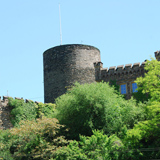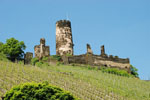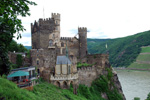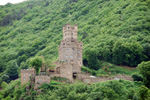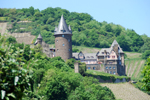History
Burg Heimburg was built between 1294 and 1305 by the Archbishop of Mainz, Gerhard II von Eppstein, as a border castle to counter the expanding domain of Count Palatine Ludwig II, the Severe, who acquired and rebuilt the nearby castles of Sooneck and Reichenstein. It was initially called Burg Haneck or Hohneck. It was strengthened in 1315 and 1328.
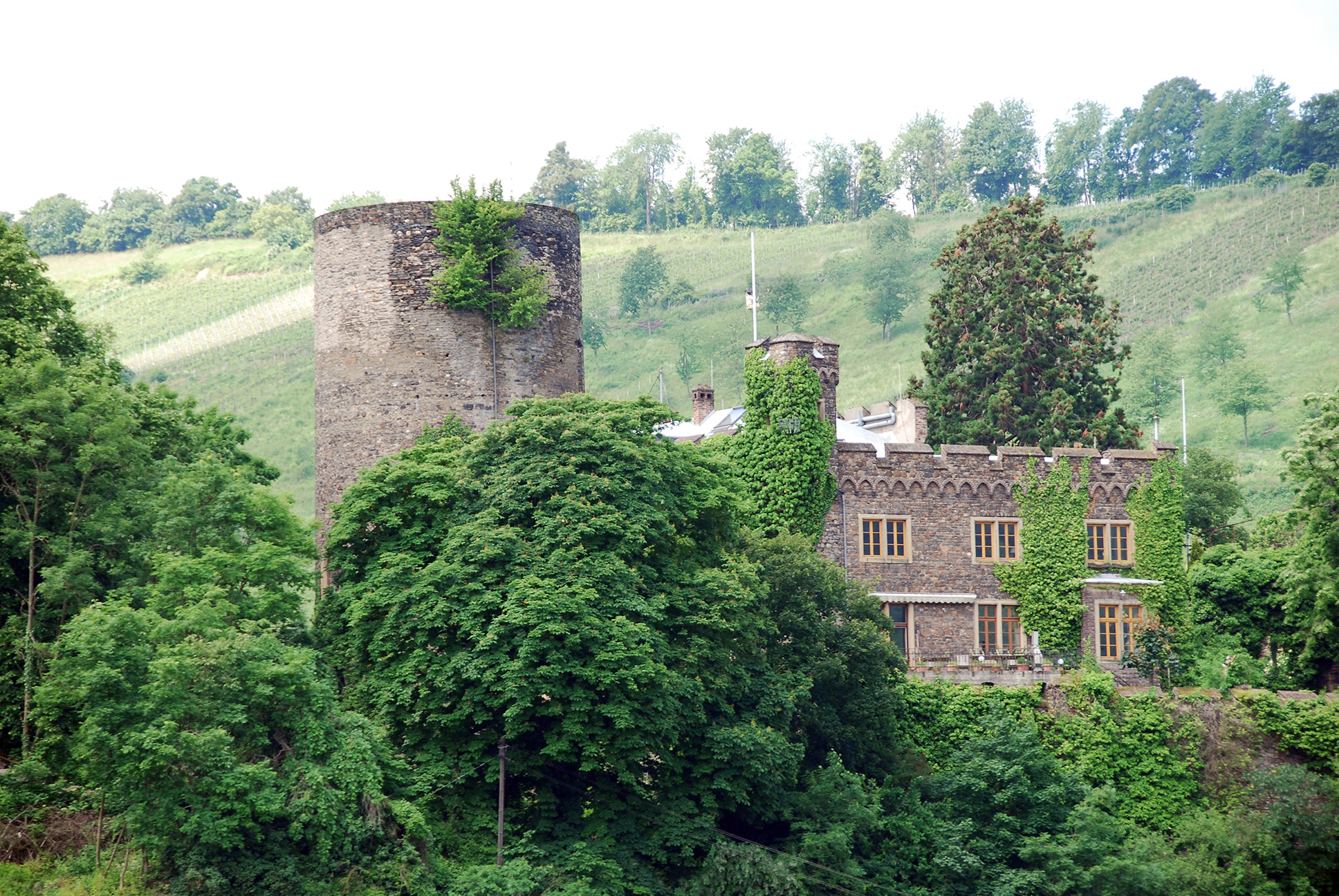
In 1344, Burg Reichenstein was ceded to the archbishop, and Burg Heimburg lost its strategic importance. After that, various officials made it home until the 16th century, when it began to fall into ruin. French troops of Louis XIV finally destroyed the castle in 1689 during the War of Palatine Succession or the Nine Years' War.
In the 19th century, the castle ruins were acquired by the Stinnes family, who renovated part of the castle in a neo-Gothic style.
Castle Highlights
Burg Heimburg overlooks the River Rhine and the town of Niederheimbach on the northeastern slope of the Bingen Forest. The castle has a semicircular ground plan. The keep stands 26 meters in height with a diameter of 12 meters. A modern residential structure is built against the original shield wall.
Burg Heimburg is privately owned and not open to the public. The best pictures of the castle can be taken from the River Rhine on one of the many boats that cruise the river daily.
The nearest castles open to visitors on the same bank of the Rhine are Burg Sooneck, Burg Reichenstein, and Burg Rheinstein, all to the south along the B9.


